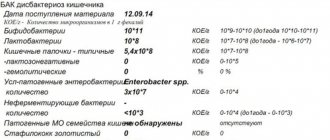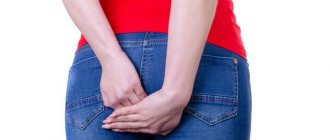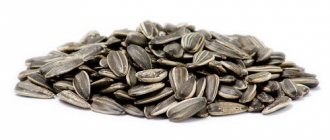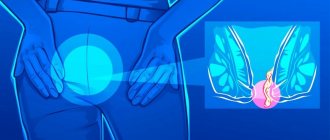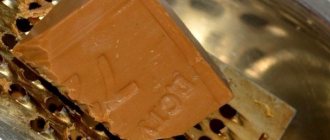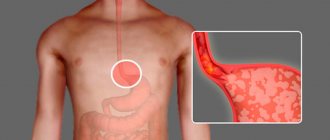Our stool can tell a lot about our health. The shape and types of feces help to recognize what is happening inside the body. When our intestines are healthy, then our stool should be normal. If, however, sometimes you notice occasional cases of unhealthy feces, do not sound the alarm, it depends on the diet. But if the symptoms become regular, you need to see a doctor, get tested and undergo the prescribed examination.
What should stool be like?
Normally, stool is considered normal if it has the consistency of toothpaste. It should be soft, brown, 10-20 cm long. Defecation should occur without much strain, easily. Small deviations from this description should not immediately cause alarm. Stool (or feces) can change depending on lifestyle and dietary errors. Beets give the output a red color, and fatty foods make the stool foul-smelling, too soft and floating. You need to be able to independently evaluate all the characteristics (shape, color, consistency, buoyancy), let's talk about this in more detail.
Why does large stool appear?
Large and thick poop that is quite difficult to move through the intestines is a clear sign of constipation.
- Large and thick poop is sausage-shaped and has a lumpy structure. The diameter of such feces reaches 3-4 cm. Defecation can cause severe pain due to the fact that the diameter of the anus is less than 5 cm and is greatly stretched during defecation. Such feces belong to the second type on the scale of fecal forms and indicate fairly rare bowel movements.
- The second type of large poop is similar to the previous one, but has a more modest diameter from 2 to 4 cm and has cracks on the surface. Defecation is also accompanied by pain, the anus is greatly stretched until cracks appear. Based on the scale data, poop of these sizes is classified as the third type. Such fecal masses indicate that bowel movements occur more often than in the second type of feces, but there is hidden constipation.
Color
Types of stool vary in color. It can be brown (healthy color), red, green, yellow, white, black:
- Red color. This color may result from ingesting food coloring or beets. In other cases, the stool becomes red due to bleeding in the lower intestine. Everyone's biggest fear is cancer, but this can often be associated with diverticulitis or hemorrhoids.
- Green color. A sign of the presence of bile. Stool moving too quickly through the intestines does not have time to turn brown. A green tint is a consequence of taking iron supplements or antibiotics, eating large amounts of greens rich in chlorophyll, or supplements such as wheatgrass, chlorella, spirulina. Dangerous causes of green stool are Crohn's disease, celiac disease, or irritable bowel syndrome.
- Yellow. Yellow feces are a sign of infection. This also indicates gallbladder dysfunction, when there is not enough bile and excess fat appears.
- White stool is a sign of diseases such as hepatitis, bacterial infection, cirrhosis, pancreatitis, and cancer. The cause may be gallstones. Stool does not stain due to bile obstruction. The white color of feces can be considered harmless if the day before you took barium before an x-ray examination.
- Black or dark green indicates possible bleeding in the upper intestine. A sign is considered harmless if it is a consequence of consuming certain foods (lots of meat, dark vegetables) or iron.
Share this article
Stool or feces is the contents of the lower parts of the large intestine, which is the end product of digestion and is eliminated from the body during bowel movements.
Individual stool characteristics can tell a lot about a person's health and help in making a diagnosis. Below are interpretations of stool quality in normal and pathological conditions.
1. Number of bowel movements. Norm: regularly, 1-2 times a day, but at least 1 time in 24-48 hours, without prolonged strong straining, painless. After defecation, the urge disappears, a feeling of comfort and complete bowel movement occurs. External circumstances can increase or inhibit the frequency of the urge to defecate. This is a change in the usual environment, a forced position in bed, the need to use a bedpan, being in the company of other people, etc. Changes: Lack of bowel movements for several days (constipation) or too frequent bowel movements - up to 5 times or more (diarrhea).
2. Daily amount of feces Normal: With a mixed diet, the daily amount of feces fluctuates within a fairly wide range and averages 150-400 g. Thus, when eating predominantly plant foods, the amount of feces increases, while in animals that are poor in “ballast” substances, it decreases. Changes: Significant increase (more than 600 g) or decrease in the amount of feces. Reasons for increasing the amount of feces (polyfecal):
- Consuming large amounts of plant fiber.
- Increased intestinal peristalsis, in which food is poorly absorbed due to its too rapid movement through the intestinal tract.
- Disruption of digestive processes (digestion or absorption of food and water) in the small intestine (malabsorption, enteritis).
- Decreased exocrine function of the pancreas in chronic pancreatitis (insufficient digestion of fats and proteins).
- Insufficient amount of bile entering the intestines (cholecystitis, cholelithiasis).
Reasons for reducing the amount of feces:
- Constipation, in which due to prolonged retention of feces in the large intestine and maximum absorption of water, the volume of feces decreases.
- Reducing the amount of food eaten or predominantly digestible foods in the diet.
3. Passing feces and floating in water. Normal: feces should be released easily, and in water it should sink gently to the bottom. Changes:
- If there is insufficient amount of dietary fiber in food (less than 30 grams per day), feces are released quickly and splash into the water of the toilet.
- If the stool floats, this indicates that it has an increased amount of gas or contains too much undigested fat (malabsorption). Also, stool may float if you eat a lot of fiber.
- If the stool is difficult to wash off with cold water from the walls of the toilet, it means it contains a large amount of undigested fat, which happens with pancreatitis.
4. Stool color Normal: With a mixed diet, the stool is brown. Breastfed babies have golden-yellow or yellow stools. Change in stool color:
- Dark brown - with a meat diet, constipation, impaired digestion in the stomach, colitis, putrefactive dyspepsia.
- Light brown - with a dairy-vegetable diet, increased intestinal motility.
- Light yellow - indicates too rapid passage of feces through the intestines, which do not have time to change color (diarrhea) or impaired bile secretion (cholecystitis).
- Reddish - when eating beets, when bleeding from the lower intestines, for example. for hemorrhoids, anal fissures, ulcerative colitis.
- Orange – when consuming the vitamin beta-carotene, as well as foods high in beta-carotene (carrots, pumpkin, etc.).
- Green - with a large amount of spinach, lettuce, sorrel in food, with dysbacteriosis, increased intestinal motility.
- Tarry or black - when eating currants, blueberries, as well as bismuth preparations (Vikalin, Vikair, De-Nol); with bleeding from the upper gastrointestinal tract (peptic ulcer, cirrhosis, colon cancer), with ingestion of blood during nosebleeds or pulmonary bleeding.
- Greenish-black - when taking iron supplements.
- Grayish-white stool means that bile is not entering the intestines (bile duct blockage, acute pancreatitis, hepatitis, cirrhosis of the liver).
5. Consistency (density) of feces. Normal: shaped and soft. Normally, stool consists of 70% water, 30% from the remains of processed food, dead bacteria and desquamated intestinal cells. Pathology: mushy, dense, liquid, semi-liquid, putty-like. Change in stool consistency.
- Very dense feces (sheep) - for constipation, spasms and stenosis of the colon.
- Mushy feces - with increased intestinal motility, increased secretion in the intestines during inflammation.
- Ointment-like - for diseases of the pancreas (chronic pancreatitis), a sharp decrease in the flow of bile into the intestines (cholelithiasis, cholecystitis).
- Clay or putty-like feces are gray in color - with a significant amount of undigested fat, which is observed when there is difficulty in the outflow of bile from the liver and gallbladder (hepatitis, blockage of the bile duct).
- Liquid – in case of impaired digestion of food in the small intestine, impaired absorption and accelerated passage of feces.
- Foamy - with fermentative dyspepsia, when fermentation processes in the intestines prevail over all others.
- Loose stools like pea puree - with typhoid fever.
- Liquid, colorless stools like rice water - with cholera.
- When the stool has a liquid consistency and frequent bowel movements, one speaks of diarrhea.
- Liquid-mushy or watery stools can occur with high water consumption.
- Yeasty stool - indicates the presence of yeast and may have the following characteristics: curdled, foamy stools like rising sourdough, may have strings like melted cheese, or have a yeasty odor.
6. Shape of feces. Standard: cylindrical, sausage-shaped. The stool should come out continuously, like toothpaste, and be about the length of a banana. Changes: ribbon-shaped or in the form of dense balls (sheep feces) is observed with insufficient daily water intake, as well as spasms or narrowing of the large intestine.
7. The smell of feces. Normal: fecal, unpleasant, but not harsh. It is due to the presence of substances in it that are formed as a result of bacterial breakdown of proteins and volatile fatty acids. Depends on the composition of the food and the severity of the processes of fermentation and decay. Meat foods give off a pungent odor, while dairy foods give off a sour odor. If digestion is poor, undigested food simply rots in the intestines or becomes food for pathogenic bacteria. Some bacteria produce hydrogen sulfide, which has a characteristic rotten odor. Changes in stool odor.
- Sour – for fermentative dyspepsia, which occurs with excessive consumption of carbohydrates (sugar, flour products, fruits, peas, etc.) and fermented drinks, such as kvass.
- Fetid - with impaired pancreatic function (pancreatitis), decreased flow of bile into the intestines (cholecystitis), hypersecretion of the large intestine. Very foul-smelling stool may be due to bacterial overgrowth
- Putrefactive – in case of indigestion in the stomach, putrefactive dyspepsia associated with excessive consumption of protein products that are slowly digested in the intestines, colitis, constipation.
- The smell of rancid oil is due to bacterial decomposition of fats in the intestines.
- Faint odor - with constipation or accelerated evacuation from the small intestine.
8. Intestinal gases. Normal: Gases are a natural by-product of the digestion and fermentation of food as it moves through the gastrointestinal tract. During and outside of bowel movements, 0.2-0.5 liters of gas are removed from the intestines of an adult per day. The formation of gas in the intestines occurs as a result of the vital activity of microorganisms inhabiting the intestines. They decompose various nutrients, releasing methane, hydrogen sulfide, hydrogen, and carbon dioxide. The more undigested food enters the colon, the more active the bacteria are and the more gases are produced. An increase in the amount of gases is normal.
- when eating large amounts of carbohydrates (sugar, baked goods);
- when eating foods that contain a lot of fiber (cabbage, apples, legumes, etc.);
- when consuming foods that stimulate fermentation processes (brown bread, kvass, beer);
- when consuming dairy products if you are lactose intolerant;
- when swallowing large amounts of air while eating and drinking;
- when drinking large amounts of carbonated drinks
An increase in the amount of gases in pathology.
- Enzyme deficiency of the pancreas, in which food digestion is impaired (chronic pancreatitis).
- Intestinal dysbiosis.
- Irritable bowel syndrome.
- Gastritis, peptic ulcer of the stomach and duodenum.
- Chronic liver diseases: cholecystitis, hepatitis, cirrhosis.
- Chronic intestinal diseases – enteritis, colitis
- Malabsorption.
- Celiac disease.
Difficulty in passing gases.
- intestinal obstruction;
- intestinal atony with peritonitis;
- some acute inflammatory processes in the intestines.
9. Stool acidity. Normal: with a mixed diet, acidity is 6.8–7.6 pH and is due to the vital activity of the colon microflora. Changes in stool acidity:
- sharply acidic (pH less than 5.5) – with fermentative dyspepsia.
- acidic (pH 5.5 - 6.7) - if the absorption of fatty acids in the small intestine is impaired.
- alkaline (pH 8.0 - 8.5) - with rotting of undigested food proteins and activation of putrefactive microflora with the formation of ammonia and other alkaline substances in the colon, with impaired pancreatic secretion, colitis.
- sharply alkaline (pH more than 8.5) - for putrefactive dyspepsia.
Normally, feces should not contain blood, mucus, pus, or undigested food residues.
693
Form
The shape of your stool can also tell you a lot about your internal health. Thin stool (resembling a pencil) should alert you. Perhaps some kind of obstruction is blocking the passage in the lower part of the intestine or there is pressure from the outside on the colon. This could be some kind of neoplasm. In this case, it is necessary to perform a colonoscopy to exclude a diagnosis such as cancer.
Hard and small feces indicate the presence of constipation. The cause may be an inadequate diet that excludes fiber. You need to eat foods high in fiber, do physical exercise, take flaxseed or psyllium husk - all this helps improve intestinal motility and make stools easier.
Stool that is too soft and clings to the toilet contains too much oil. This indicates that the body does not absorb it well. You may even notice oil droplets floating. In this case, it is necessary to check the condition of the pancreas.
In small doses, mucus in the stool is normal. But if there is too much of it, it may indicate the presence of ulcerative colitis or Crohn's disease.
Associated symptoms
Often the color of stool is caused by taking medications, eating fruits, vegetables, and drinks. Therefore, it is necessary to monitor specific signs of intestinal ailments.
It is acceptable to suspect a pathological process, but without examination even a doctor will not make a diagnosis.
Signs include gas formation, flatulence, belching with a pungent odor and taste. Digestion and absorption of eaten food is accompanied by severe nausea and vomiting. Any intestinal or stomach disorders, coupled with changes in feces, indicate an unfavorable process in the body.
Conventionally, accompanying symptoms are divided into intestinal and extraintestinal. Disorders actively manifest in the last stages of pathology development. At first, it is difficult to detect the disease on your own. Various manifestations from delayed evacuation to abdominal pain are a serious reason to consult a specialist.
Other characteristics
According to its characteristics, feces in an adult are directly related to lifestyle and nutrition. What causes an unpleasant odor? Pay attention to what you've been eating more frequently lately. A foul odor is also associated with taking certain medications and can manifest itself as a symptom of some kind of inflammatory process. In cases of food absorption disorders (Crohn's disease, cystic fibrosis, celiac disease), this symptom also appears.
Floating stool in itself should not be a cause for concern. If the floating stool has a very unpleasant odor or contains a lot of fat, this is a symptom of poor absorption of nutrients in the intestine. In this case, body weight is quickly lost.
Thin stool: causes of ribbon stool in an adult
Feces are a product of our metabolism. It also serves as a basis for doctors in diagnosing many diseases. Conversely, some changes in feces may be a reason for examination. Thus, ribbon stool may indicate the occurrence of certain pathologies.
Let's look at what diseases cause thin stool. It occurs with hemorrhoids, the presence of parasites in the body, spasm of the rectal sphincter, the development of neoplasms, colitis, irritable bowel syndrome. When people don't drink enough fluids or eat too much fast food, feces that are too thin can also appear.
The appearance of ribbon stool is often observed in pregnant women. Why this happens can be explained very simply. Due to the fact that during pregnancy the fetus grows rapidly, the uterus expands greatly and puts pressure on the rectum. Thereby reducing its clearance. Therefore, feces come out of the rectum in the form of a ribbon.
In men, sometimes stool looks like a pencil with prostatitis. This is an inflammation of the prostate gland, which also results in a narrowing of the lumen of the small intestine.
Thin stool for hemorrhoids
Hemorrhoids are inflammation of the hemorrhoidal veins in the lower part of the rectum. As a result of this inflammation, the blood flow in the veins is disrupted, they stretch and nodules form. Depending on their location, there are three forms of hemorrhoids: internal, external and combined.
Causes:
- sedentary lifestyle,
- frequent constipation and diarrhea,
- pregnancy,
- alcohol abuse,
- unhealthy diet
- heredity.
In the early stages, hemorrhoids do not cause any sensations, but only as the disease develops do symptoms increase.
Manifestations of hemorrhoids: the pain that occurs during the act of defecation is very pronounced, cutting and burning in nature. Due to the formed nodules, which narrow the lumen of the small intestine, excrement cannot exit the body normally.
They are compressed and have difficulty passing through the intestinal tract, causing constipation and ribbon-like stool. It may be mixed with mucus, sometimes with scarlet blood located in stripes.
In this case, the blood does not mix with the excrement, but remains on its surface.
With constipation, stool is often not soft, it can be either long, sausage-shaped, or intermittent. After emptying the rectum, the patient experiences very itching in the anal area. Anal fissures may occur due to prolonged constipation.
If the form of hemorrhoids is external, then lumps are visible within the anus. In the internal form, blood is observed on linen, feces or toilet paper.
Also, when the disease is long-term, during defecation the internal node may fall out of the rectum.
Hemorrhoids require mandatory treatment, as they can serve as the beginning of the formation of malignant processes in the intestines.
Digital examination of the rectum by a proctologist and sigmoidoscopy will help diagnose the disease. These methods make it possible to identify the presence of nodules and examine the intestinal mucosa.
Rectal neoplasms
Constipation and ribbon-like stool can also occur when polyps or other neoplasms grow on the intestinal mucosa. The most dangerous condition is the development of malignant processes.
With rectal cancer, ribbon-like feces are observed; the larger the tumor grows, the thinner the feces become. Dark blood appears, which mixes with feces, prolonged constipation.
Mucus secretion occurs before bowel movements begin.
You can also note the general symptoms that occur with any malignant formation - weight loss, fatigue, lethargy, anemia, decreased immunity.
Polyps are benign growths on the intestinal mucosa. They also cause the appearance of ribbon-like feces, since they also narrow the intestinal lumen. Polyps themselves are not dangerous, but they can become malignant, which is something to be wary of. This is the process of transforming a benign tumor into a malignant one.
If an adult is suspected of developing an oncological process in the rectum, the following research methods are used:
- finger examination,
- anoscopy – insertion of an anoscope into the anus to examine the surface of the anal canal,
- sigmoidoscopy,
- Ultrasound,
- stool occult blood test,
- general blood analysis,
- blood chemistry.
Treatment consists of stopping the growth of the tumor using radiotherapy and chemotherapy. Doctors often resort to surgery.
Preventing the appearance of ribbon-shaped stool
To ensure that you do not have thin stool, you first need to monitor your diet. The diet must be balanced; liquid food should not be neglected. You need to eat often, in small portions. You should limit the consumption of harmful foods, do not eat dry food, and drink enough fluids.
Also an important preventive measure is avoiding stressful situations. If possible, you should be less nervous. Stress and anxiety are the causes of various pathological processes.
You should play sports and lead an active lifestyle. Quitting bad habits such as smoking and drinking alcohol will also reduce the risk of disease.
What to do if the shape of bowel movements changes?
Do not panic when ribbon-like stool appears. After all, the cause of this may not necessarily be cancer or other dangerous diseases. Sometimes it's just a result of poor diet or stress.
But in order to protect yourself, if such changes appear in the stool, you still need to consult a specialist.
If the cause of the change in the shape of stool is a disease, then the sooner it is diagnosed, the easier it will be to treat.
Loading…
Source: https://KardioBit.ru/analizy/kal/lentovidnyj-kal-prichiny-poyavleniya-tonkogo-kala-u-vzroslogo-cheloveka
A coprogram is...
Chyme, or food gruel, moves through the gastrointestinal tract and fecal masses are formed in the large intestine. At all stages, breakdown occurs, and then absorption of useful substances occurs. The composition of the stool helps determine whether there are any abnormalities in the internal organs. A scatological examination helps to identify a variety of diseases. A coprogram is a chemical, macroscopic, microscopic examination, after which a detailed description of the feces is given. Coprograms can identify certain diseases. These may be disorders of the stomach, pancreas, intestines; inflammatory processes in the digestive tract, dysbiosis, malabsorption, colitis.
What other stool parameters are important?
Stool analysis is called a coprogram. This is a study of physical and chemical properties, as well as the result of microscopy.
Be sure to read:
Yeast in stool: is it dangerous and is treatment necessary?
The coprogram examines the following parameters:
- properties of hydrochloric acid and stomach enzymes;
- enzymatic activity of the pancreas;
- liver function;
- the speed of food movement through the stomach and intestines;
- quality of absorption in the duodenum and small intestine;
- the presence of inflammation in different parts of the digestive canal;
- normal or pathological composition of microflora;
- the presence of colitis - ulcerative, allergic or spastic.
A normal coprogram looks like this:
- form – decorated;
- consistency – soft;
- Brown color;
- the smell is specific and not sharp;
- reaction – neutral;
- connective tissue – no;
- muscle fibers - no;
- striation of muscle fibers – no striation;
- neutral fat - no, a small amount is found in children in the first month of life;
- fatty acids – no;
- indigestible fiber – moderate amount;
- soap - no;
- Digestible fiber – no;
- starch grains outside – and intracellular – no;
- iodophilic bacteria - no;
- mucus - no;
- leukocytes – single ones are allowed;
- red blood cells - no;
- epithelium - no;
- protozoa - no;
- yeast fungi - no;
- crystals - no.
Bristol scale
English doctors at the Royal Hospital in Bristol have developed a simple but unique scale that characterizes all the main types of feces. Its creation was the result of the fact that experts were faced with the problem that people are reluctant to open up about this topic; embarrassment prevents them from talking in detail about their stool. Based on the developed drawings, it became very easy to independently characterize your own bowel movements without any embarrassment or awkwardness. Currently, the Bristol Stool Shape Scale is used throughout the world to assess the functioning of the digestive system. For many, printing a table (types of feces) on the wall in your own toilet is nothing more than a way to monitor your health.
1st type. Sheep feces
It is called so because it is shaped like hard balls and resembles sheep feces. If for animals this is a normal result of intestinal function, then for humans such stool is an alarm signal. Sheep pellets are a sign of constipation and dysbacteriosis. Hard feces can cause hemorrhoids, damage to the anus, and even lead to intoxication of the body.
2nd type. Thick sausage
What does the appearance of stool indicate? This is also a sign of constipation. Only in this case are bacteria and fibers present in the mass. It takes several days to form such a sausage. Its thickness exceeds the width of the anus, so emptying is difficult and can lead to cracks and tears, hemorrhoids. It is not recommended to self-prescribe laxatives, as sudden release of feces can be very painful.
3rd type. Sausage with cracks
Very often people consider such stools to be normal, because they pass easily. But make no mistake. Hard sausage is also a sign of constipation. When defecating, you have to strain, which means there is a possibility of anal fissures. In this case, irritable bowel syndrome may be present.
4th type. Ideal chair
The diameter of the sausage or snake is 1-2 cm, the feces are smooth, soft, and easily amenable to pressure. Regular bowel movements once a day.
5th type. Soft balls
This type is even better than the previous one. A few soft pieces form and come out gently. Usually occurs with a large meal. Stool several times a day.
6th type. Unshaped chair
The feces come out in pieces, but unformed, with torn edges. It comes out easily without hurting the anus. This is not diarrhea yet, but it is already a condition close to it. The causes of this type of stool can be laxative medications, increased blood pressure, excessive consumption of spices, and mineral water.
7th type. Loose stools
Watery stools that do not include any particles. Diarrhea requiring identification of causes and treatment. This is an abnormal condition of the body that needs treatment. There can be many reasons: fungi, infections, allergies, poisoning, liver and stomach diseases, poor diet, helminths and even stress. In this case, you should not postpone your visit to the doctor.
What does feces consist of?
Conventionally, feces can be divided into two main parts:
- Water. It makes up ¾ of the total volume of feces. Its main purpose is to dissolve toxic substances and soften the solid residue to facilitate the passage of chyme through the intestines.
- Dry residue. It makes up a quarter of everything released during the act of defecation. This is the most concentrated part of the waste. Conventionally, it can also be divided into 3 approximately equal parts:
- Undigested plant fibers. When taken with food, they transit through the entire intestinal tract, performing the functions of prebiotics. Fiber is the most famous of all plant fibers. It is necessary in the daily diet, as it functions as an activator of motor skills and a nutrient medium for beneficial microflora. The more plant foods a person eats, the more abundant the feces.
- Bacteria. In fact, feces are a cemetery for beneficial microflora that have expired. The more fiber, the more microflora there will be in the feces, since the intensity of the work of bacteria increases, the processes of their division and reproduction intensify. Consequently, there are more of them.
- Components of metabolism. This part makes up all those wastes and toxins that are collected throughout the body and are released into the environment by back secretion into the intestinal lumen. There they dissolve in water and mix with the rest of the solid residue. This part also includes other undigested components: muscle fibers, soaps, fats. For normal digestion there should be as little as possible. If there is a deficiency of enzymes, their number increases, which can be observed in the results of the coprogram.
Be sure to read: How to take a stool test for hymenolepiasis?
The act of defecation
Each organism is characterized by an individual frequency of bowel movements. Normally, this is from three times a day to three bowel movements a week. Ideally - once a day. Many factors affect our intestinal motility, and this should not be a cause for concern. Travel, nervous tension, diet, taking certain medications, illness, surgery, childbirth, physical activity, sleep, hormonal changes - all this can be reflected in our stool. It is worth paying attention to how the act of defecation occurs. If excessive efforts are made, this indicates certain problems in the body.
Possible consequences
Sheep feces are a sign of constipation. This condition should never be ignored, as the consequences of the disease can be very sad. The stool should be regular. Otherwise, feces stagnate in the intestines, becoming a source of toxins. Toxins penetrate the blood, causing general intoxication.
In this case, the child suffers from headaches, becomes tearful and irritable, against this background anal fissures, rectal prolapse, and hemorrhoids may occur. Such children are often developmentally delayed. Ignoring this condition significantly increases the risk of developing intestinal tumors.
I forgot to indicate the age, I think, at this age there should not be such problems as hemorrhoids, or not?
I eat little bread, the bread that is on the shelves in Russia, unfortunately, is also harmful to health, if not harmful, then at least there is little benefit from it, just compare the bread that the citizens of the Soviet Union ate and their stories about the aroma , taste, then the conclusions suggest themselves. In those days, chemistry had not yet penetrated into all areas of our lives.
I don’t drink alcohol, although I doubt that it will have an effect on feces, although everything is possible, because it directly affects the liver, it’s a pity to look at people with red spots on their faces and alcoholics.
Visit a regular but adequate therapist, perhaps a gastroenterologist.
I think you really need to start with proper nutrition. The problem is most likely functional.
Where can I go with my illness?
Each pathological condition has its own causes, which can be both subjective and objective:
- poor nutrition is the simplest and most easily eliminated subjective cause of constipation. The diet contains few foods rich in coarse fiber, which stimulates the intestines and promotes the elimination of waste and toxins with feces;
- sedentary work mode, low physical activity lead to improper functioning of the entire gastrointestinal tract, intestinal motility decreases, motor and transport functions are impaired, which leads to constipation;
- Drug dependence occurs when a person has used laxatives uncontrollably for a long time. The intestines simply “refuse” to perform their functions of eliminating processed foods without outside help. An adult (especially an older person) may become dependent on mechanical methods of influencing the act of defecation - if an enema is often (almost regularly) done in order to induce stool. This is especially true for older people with severe depression. In the case of an advanced process, even fecal perforation of the intestine may occur;
- reduction of tenesmus (the urge to defecate), occurring at the psychological level. When faced with special conditions (being in transport, at work or in another public place), a person spontaneously contracts the muscles of the external anal sphincter. Sometimes this phenomenon is associated with a painful act of defecation, which causes very hard and dry feces;
- exposure to stress, nervous stress causing depression. In such cases, the entire body works in an “emergency” mode, which also affects the digestion and excretion system;
- frequent consumption of alcohol, especially strong alcohol, even in small quantities, can cause not only constipation, but also intestinal obstruction if the cause is not eliminated in a timely manner;
- dysbacteriosis is a disruption of the normal intestinal microflora, which can cause both hard stools and diarrhea with a host of other unpleasant symptoms;
- diseases of the gastrointestinal tract: colitis of various etiologies, enterocolitis, enteritis, pathologies of the pancreas;
- oncological diseases of the gastrointestinal tract, especially the large intestine.
During pregnancy and after childbirth (lactation), women may experience constipation caused by hormonal changes in the body, increasing load on the gastrointestinal tract (in particular the intestines), postpartum hemorrhoids, cracks in the colon during childbirth and some other factors. In this situation, a woman should definitely consult with a specialist so that taking medications (even folk remedies) does not harm the baby’s health.
Feces in children
Many mothers are interested in what baby’s stool should be like. It is worth paying special attention to this factor, since gastrointestinal diseases are especially severe at an early age. At the first suspicion, you should contact your pediatrician immediately.
In the first days after birth, meconium (dark color) comes out of the body. During the first three days, light-colored feces begin to mix in. On the 4-5th day, feces completely replace meconium. During breastfeeding, golden-yellow feces are a sign of the presence of bilirubin, paste-like, homogeneous, and acidic. At the 4th month, bilirubin is gradually replaced by stercobilin.
What diseases do deviations in the coprogram indicate?
Each disease changes the composition of stool differently:
- a lot of undigested muscle and connective tissue (creatorhea) - lack of pancreatic and stomach enzymes;
- undigested fiber and starch (amilorrhea) – diseases of the small intestine;
- the presence of neutral fat (steatorrhea) – a violation of the secretion of bile;
- many leukocytes – inflammatory process;
- white stool – obstructive jaundice;
- black tar (melena) – bleeding from the upper parts of the digestive canal;
- admixture of scarlet blood - hemorrhoids, anal fissure, tumor;
- pus – rectal abscess;
- protozoan cysts – helminthic infestation.
A laboratory stool test can tell you almost everything about your health.
In continuation of the topic, be sure to read:
- Intestinal dyskinesia: types, causes, symptoms and treatment methods
- Stool color: normal and pathological coloration of human excrement
- How to test stool for pathology at home?
- Details about bowel cancer: stages, symptoms, treatment and prognosis
- What is diarrhea syndrome and how does it manifest?
- Stool analysis for UPF: preparation, delivery and interpretation
- Taking a stool test for dysbacteriosis + interpretation
- Analysis of feces for carbohydrates in infants: delivery and interpretation of readings
- Stool analysis for scatology: preparation, submission and interpretation of the study
- Endoscopic methods for examining the intestine: description and preparation
Be sure to read:
Analysis of stool for disgroup: essence, preparation and delivery of analysis
Types of feces in children
With various pathologies, there are several types of feces in children, which you need to know about in order to prevent various diseases and unpleasant consequences in time.
- "Hungry" feces The color is black, dark green, dark brown, the smell is unpleasant. Occurs with improper feeding or fasting.
- Acholic feces Whitish-gray color, discolored, clayey. With epidemic hepatitis, biliary atresia.
- Putrefactive. Pasty, dirty gray, with an unpleasant odor. Occurs during protein feeding.
- Soapy. Silvery, shiny, soft, with mucus. When feeding with undiluted cow's milk.
- Fatty feces With a sour odor, whitish, a little mucus. When consuming excess fat.
- Constipation. Gray color, hard consistency, putrid odor.
- Watery yellow stool. When breastfeeding due to a lack of nutrients in mother's milk.
- Pasty, thin stool, yellow in color. It is formed due to excessive feeding of cereals (for example, semolina).
- Feces for dyspepsia. With mucus, coagulated, yellow-green in color. Occurs when there is an eating disorder.
What are the dangers of large feces?
Sometimes the poop can be so large that going to the toilet turns into hellish torment. Every millimeter of such poop brings with it severe pain that some people compare it to childbirth. In addition, too thick stool sometimes damages the anus and is followed by bleeding.
In addition to pain during bowel movements, large amounts of shit contribute to the development of various diseases. Due to constant pressure on the intestinal walls, a person may develop irritable bowel syndrome. Prolonged stagnation of feces in the intestines leads to intoxication of the body. The process of decay occurs and harmful toxins enter the body.
This leads to deterioration of immunity, well-being, and also contributes to the development of infectious diseases. Due to stagnant feces, the load on the internal organs increases, and as a result, hormonal imbalances, cardiovascular diseases, and the same infectious diseases develop.
Due to the difficulty of defecation, there is a lot of pressure on the anus, leading to inflammation of hemorrhoids, anal fissures and bleeding.
As mentioned above, large stool masses are all signs of constipation. There are many reasons for constipation and they are not always obvious.
The most common reasons for large poops are:
- Dysbacteriosis;
- Poor nutrition and eating dry food;
- Sedentary lifestyle;
- Frequent stress;
- Taking medications that cause constipation;
- Impaired intestinal motility.
Please note that there is no need to self-medicate. It's better to see a doctor, there's nothing shameful in that.
For children, in most cases, everything is the same as for adults. But most often, children poop large poops due to emotional stress. The child's psyche is quite shaky and easily vulnerable. They worry about the smallest trifles, which do not seem like such to them. An unfavorable family environment, problems at school, difficult contact with peers - all this can lead to constipation in the form of very large poop that causes pain. Again, poor nutrition and medications can easily disrupt the digestive processes of a child’s body.
Parents should take into account the fact that a child’s body suffers from illnesses much more than an adult, since he is not yet strong enough. Therefore, it is recommended to periodically monitor your child’s stool.
In fact, the problem of the formation of large feces is very relevant and widespread. Many people suffer every day and experience extreme pain when visiting the toilet. At the same time, they are in no hurry to see a doctor, as a result of which this leads to the fact that in addition to constipation, other serious diseases develop that will have to be fought for a long time.
A site about poop is always with you. Relief!
Thank you for your support, Kakasic appreciates your help.
Why did you draw poop that doesn’t match the text?
Sometimes unformed feces have a pronounced mare-like consistency due to the presence of a large amount of fat in it with impaired pancreatic secretion and changes in bile secretion. Pasty feces also appear in colitis with diarrhea due to increased intestinal motility. Foamy stool occurs in patients with fermentative dyspepsia.
MY CHILD HAS THIS PROBLEM, BUT HAS NO PROBLEMS AND HAS NO CONSTIPATION OR IMPROPER NUTRITION, PLEAVES WITHOUT PAIN, MAYBE IT’S HER ANATOMY...
I haven't read much of anything. Shit, not an article
KAKASICH IS A BEGGAR! TRYING TO MAKE MONEY ON SUCH A SIMPLE TOPIC...
Why close? However, if you visited the site, you were probably looking for what was on it. It was you who came to me, and not I to you? Is not it? Regarding the content, I can say that many of the topics are not at all narrow-minded. When people come to Kakasic, they get an answer to their question. Some topics are not customary to discuss in society and people sometimes have no one to ask, and here Kakasic comes to the rescue.
For some it gives the necessary information, and for others it gives them a good mood and moral support. “THE BEGGAR! TRYING TO MAKE MONEY ON SUCH A SIMPLE TOPIC...” is an incorrect expression. What do you understand as a FAR topic? Do you listen to music? How many distant songs have you heard? At the same time, the performers sell you their work, and you, in turn, by listening to this music without paying for it, are in fact stealing.
Hello everyone, calla lilies are very tight, what should I do?
Go to the gym, then have some soup and beet salad. In general, you need to follow a diet - eat zucchini and cucumbers. Avoid flour
I don’t know about others, but when I do something I try to slightly hold back my shit. I enjoy it))
You can also put a dildo in there.
There were guests at the dacha, I saw a big fat turd in the toilet after a relative. Decided that she loves anal sex!?
Stung there in two bows...
The child cannot poop, the poop is very large, tell me what to do? I’ve already tried microlax and glycerin suppositories, it doesn’t help.
And if the stool is about 30 cm long and without lumps, is that also constipation? Ps I go to the toilet every day
The site is always with you. Relief!
